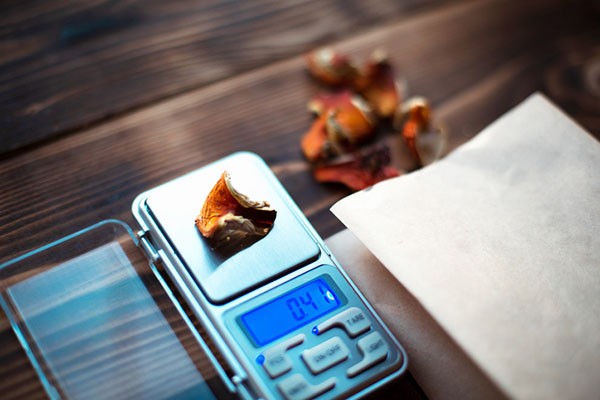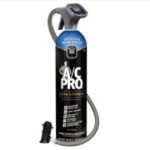Microdosing psychedelic substances, particularly psilocybin mushrooms (shrooms), has gained significant traction due to potential mental health benefits. People are exploring microdosing for purported enhancements in mood, creativity, focus, and empathy. But How Much Is A Microdose Of Shrooms, and what should you know before trying it? This guide provides a comprehensive overview, addressing dosage, safety, legality, and the current state of research.
Understanding Microdosing
Microdosing involves consuming a sub-perceptual dose of a psychedelic substance, meaning the dose is too small to cause hallucinogenic effects. The intention is to experience subtle positive effects without the intense altered states associated with recreational or therapeutic doses.
Defining a Microdose of Shrooms
The definition of a psilocybin microdose isn’t universally standardized, complicating research efforts. However, a common guideline suggests that a microdose is approximately 1/5 to 1/20 of a typical recreational dose. Given that a medium recreational dose of dried psilocybin mushrooms often falls between 2 to 3 grams, a typical microdose would be around 0.1 to 0.3 grams.
 close-up photo of a portable digital scale holding a piece of dried mushroom, with other pieces in the background out of focus
close-up photo of a portable digital scale holding a piece of dried mushroom, with other pieces in the background out of focus
Image: Measuring a microdose of shrooms on a digital scale, emphasizing the importance of precise dosage.
Several factors influence the ideal microdose:
- Potency variations: The potency of psilocybin mushrooms can vary significantly depending on the species, growing conditions, and storage methods. This lack of consistent potency poses a challenge in determining an exact microdose.
- Individual sensitivity: People respond differently to psilocybin. Factors like body weight, metabolism, and individual brain chemistry can impact the effects of a microdose.
- Tolerance: Regular microdosing can lead to the development of tolerance, potentially diminishing the effects over time. Some users cycle on and off microdosing schedules to mitigate this.
Safety Considerations for Microdosing Shrooms
While psilocybin is generally considered safe in low doses, several safety aspects warrant careful consideration:
- Source reliability: Due to the current legal status in many regions, psilocybin mushrooms are often obtained from unregulated sources. It’s crucial to ensure that mushrooms are correctly identified and free from contaminants. Misidentification can lead to accidental consumption of poisonous mushrooms, resulting in severe health risks, including liver damage or even death.
- Mental health: Individuals with a personal or family history of major mental illnesses, such as schizophrenia or bipolar disorder, should exercise extreme caution or avoid microdosing altogether. Psychedelics may potentially exacerbate these conditions or trigger psychotic episodes in vulnerable individuals.
- Drug interactions: Psilocybin can interact with other medications, potentially leading to adverse effects. Consulting with a healthcare professional is essential to assess potential interactions and ensure safety.
Legal Status of Psilocybin
The legal status of psilocybin varies widely. In many countries and states, psilocybin remains illegal. However, some jurisdictions have decriminalized or legalized psilocybin for medical or recreational use. Understanding the local laws is crucial to avoid legal consequences.
The Science Behind Microdosing
The research on microdosing is still in its early stages. While anecdotal evidence suggests various benefits, scientific studies offer mixed results.
- Promising studies: Some studies have demonstrated improvements in mood and mental health among microdosers. These studies often rely on self-reported data, which can be influenced by the placebo effect.
- Controlled trials: Other studies employing randomized, controlled designs have shown less conclusive results. Some research indicates that the perceived benefits of microdosing may be largely attributable to expectancy effects.
It’s important to approach the potential benefits of microdosing with a critical mindset, acknowledging the limitations of current research.
The Future of Psychedelics and Microdosing
Experts anticipate that some psychedelics, including psilocybin, may become legalized for medical use under supervised settings in the coming years. Decriminalization and regulation could potentially enhance product safety and increase access.
However, concerns remain regarding the potential risks of uncontrolled access to these substances, particularly for individuals with underlying mental health vulnerabilities.
Conclusion: Is Microdosing Right for You?
Microdosing psilocybin mushrooms is a complex topic with potential benefits and risks. If you’re considering microdosing, here’s a recap of key considerations:
- Consult your doctor: Discuss your intentions with a healthcare professional to assess potential risks and interactions, particularly if you have pre-existing medical or mental health conditions.
- Source carefully: Obtain psilocybin from a reliable source to ensure correct identification and avoid contamination.
- Start low, go slow: Begin with a low dose (e.g., 0.1 gram) and gradually increase it until you find the optimal level.
- Be mindful: Pay attention to your body and mind, tracking any positive or negative effects.
- Understand the law: Be aware of the legal status of psilocybin in your area.
While the research on microdosing is ongoing, it’s important to approach it with caution and make informed decisions based on the available evidence.
References
- “Back to the Future: Psychedelic Drugs in Psychiatry.” Harvard Health Blog, 22 Jun. 2021, https://www.health.harvard.edu/blog/back-to-the-future-psychedelic-drugs-in-psychiatry-202106222508.
- Cameron, L. P., & Olson, D. E. (2019). Psychedelic microdosing: A subreddit survey. Journal of psychoactive drugs, 51(2), 113-122.
- Szigeti, B., Kartner, L., Blemings, A., Rosas, F. E., Feilding, A., Nutt, D. J., & Carhart-Harris, R. L. (2021). Self-blinding citizen science to explore psychedelic microdosing. eLife, 10, e62878.
- Rootman, J. M., Kiraga, M., Searle, T., et al. (2022). Psilocybin microdosers demonstrate sustained mood and mental-health improvements. Scientific Reports, 12(1), 13142.
- Tagliazucchi, E., Roseman, L., Kaelen, M., Orgs, G., et al. (2022). Effects of psilocybin on functional connectivity and mood in healthy volunteers. Translational Psychiatry, 12(1), 317.
